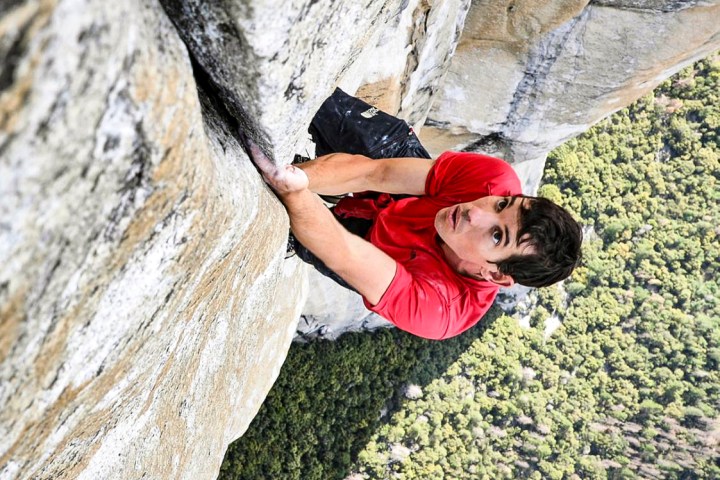
Honnold is renowned for his free climbing and speed records, most notably within Yosemite Valley. After months of training, he began his climb at 5:32 a.m PT on June 3, reaching the top just under four hours. According to National Geographic, he ascended via “Free Rider,” a route rated 5.13a on the Yosemite Decimal Rating System. The route contains 33 pitches and was first climbed by Alex Huber in 1998.
In the animated interview, Honnold speaks about what drives him to climb. “Climbing, in a lot of ways, is pretty contrived,” he said. “You could always just walk around back and get to the top of the wall. But I think the really inspiring objectives in climbing are the ones that feel the least contrived. In some ways the existence of a grand challenge, it’s almost like taunting you. Certain obstacles just cry out to be overcome.” Honnold goes on to say how El Capitan has always been the most inspiring wall to him.
“Before I climbed it, I could just look at it and be like, ‘That’s an amazing wall,'” continues Honnold. For him, part of it was the symmetry and aesthetics of the wall. Its large prow tapers evenly on either end. There is also nowhere else in the world where people can climb a 3,000-foot vertical wall that only a five-minute walk from the road.
The idea of free-soloing El Capitan first entered Honnold’s mind somewhere between 2008 and 2009 as an abstract dream. Every time he looked at the wall, it filled him with fear. “Honestly, one of my big fears on El Cap has always been that I’m going to step on one of these enormous, mealy looking worms and blow my foot off,” Honnold said. When it comes to actual risk, Honnold feels that dealing with personal mortality puts life into perspective.
If that’s still not enough to get you out of the chair and into some climbing gear, Google Street View allows people to view the entire vertigo-inducing climb from the comfort of their screen.




